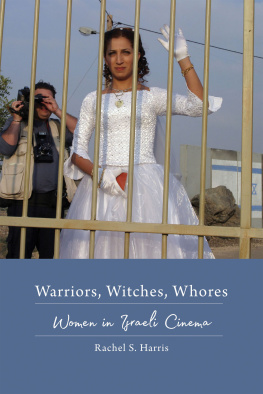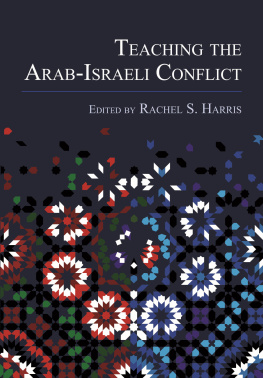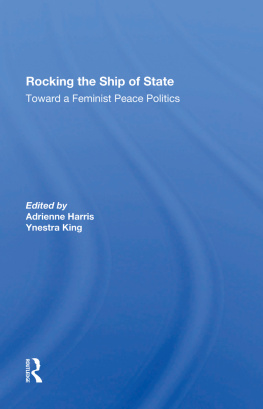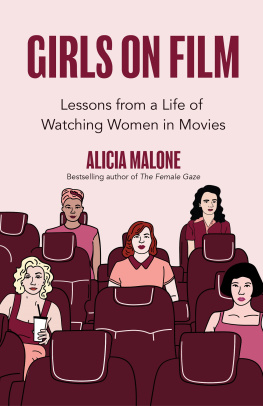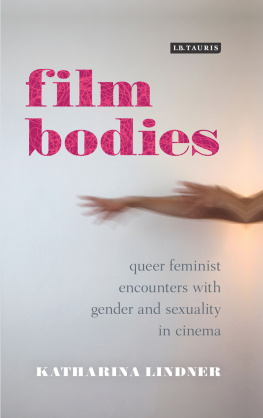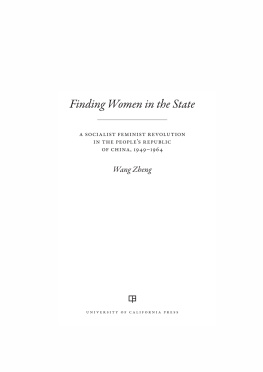Acknowledgments
This book is the result of serendipitous encounters and fortunate timing, though I could as easily say that it began by accident. In 2010, fewer than five hundred Israeli feature films had been made, many of which had been lost, were available only through film and television archives, or were in old video formats that could be viewed only in Europe or on antiquated equipment. I had seen several Israeli films and taken a short Israeli film course at the Rothberg School of International Studies at the Hebrew University, a basic foundation for a new course I was planning on Israeli cinema. With a concerted effort, I imagined that I could probably watch about two hundred films, which was most of the readily available material, a task that would probably take several years. Limited to my local video stores rental options, the increasing offerings of Netflix, which had begun streaming Israeli films with about twenty-five listed at any given time, the occasional listing on my cable provider, and purchases made from stores in Israel, I thought that this number would provide me with a strong impression of the range of Israeli cinema and its history, and certainly offer enough material from which to build an undergraduate course.
Soon after moving to Chicago, at a dinner with close friends Ruth Lipman and Jerry Warren, I mentioned my plans. Their son Josh, who had recently graduated and moved to the area, revealed his passion for Israeli film and expressed an interest in embarking on this adventure with me. So, every Wednesday for about a year, Josh and I met, ate dinner, and watched an Israeli film or two. Our viewing was indiscriminate. We sometimes followed actors or directors. We sometimes chose films for their subject matter or the period in which they were made. We attended new film releases and followed stories in the newspaper. Increasingly we researched the films, and when browsing the internet no longer sufficed I invested in books and scholarly articles, turning our casual entertainment into extended, often theoretical, discussions. Periodically we were joined by roommates, neighbors, and friends. Eventually Meytal Ozeri, the emissary for Young Judea and herself a source of Israeli films we couldnt otherwise find, became a long-standing viewing companion, finally taking over Joshs role and continuing to discuss films with me long after her return to Israel.
The digitalization of the Spielberg Archives, with its online portal that has made older documentary footage and early feature films freely available, aided my work. The special efforts made by Israeli film funds to digitalize long-forgotten Israeli classics, an effort that means that films that would otherwise have been lost in the archives are now for sale in good media stores in Israel, also helped me. I particularly want to thank Eitan Senna in the film department of Haozen Hashlishit in Tel Aviv and the staff at Eighth Note at Ben Gurion airport for directing me to many of these newly released classics.
As this project expanded, I began to advise film festivals on Israeli cinema. I am grateful to Cindy Stern for making me the Chicago Festival of Israeli Cinema representative at the Jerusalem International Film Festival, enabling me to view the newest cinematic offerings, and for sourcing copies of freshly released films on my return home. Hedva Goldschmidt at 2GoFilms was extremely generous with screener copies, and the Israeli consulate in Chicago, through Nitza Gilad, Maya Karmely, and Nir Eilon, and the Chicago International Film festival have also helped me gain access to new films and connected me with actors and filmmakers. Through the Israel Project at the University of Illinois I have been able to screen films and invite filmmakers to campus, and I thank the Program in Jewish Culture and Society at the university and the Jewish Federation of Chicago for making this possible, and particularly the late Michael Kotzin, whose vision and enthusiasm so often shaped the scope of what was possible. Thanks also go to the Chicago Humanities Festival, which graciously invited me to interview some of the leading cultural figures in Israel, and to Eran Riklis for permission to publish the image from The Syrian Bride on the front cover of this book.
Many colleagues have been extraordinarily kind, particularly Yael Munk, Amy Kronish, Elliot A. Ratzman, and Dan Chyutin, who attended screenings with me, provided hard-to-find films, and directed me to topical scholarship and journalism. Dan has served as a sounding board and important intellectual companion, particularly in the later stages of the books evolution, reading manuscript drafts and bringing me suitcases full of recently released films on his visits. I am so grateful for this meeting of the minds. Thanks go to Alexis Pogolreskin, Adriana Jacobs, and Carol Zemel, who read late drafts of selected sections and helped me to find clarity of mind as well as expression. Mya Guarinieri Jaradat generously shared her published and unpublished research on the foreign workers and refugees in Israel. I also want to thank Michal Aviad, Anat Shperling, Netalie Braun, Smadar Zamir, Lior Elephant, Israela Shaer Meoded, and the women of the Forum for Women Filmmakers and Television Artists for their insightful observations about womens activism in the film industry, and I commend them for their ongoing fight for equality of access, treatment, and representation for women.
While I have seen many more than the two hundred films I set out to view, the Israeli film industry itself has changed radically in the last decade. From the handful of films made annually during the 1980s and early 1990s, this relatively obscure industry has undergone a dramatic transformation. The quality and number of films (shorts, documentaries, and features) being produced has grown significantly, and Israeli films are repeatedly finalists and award winners at major international film festivals all over the world. No matter how current the films I reference in this book, new releases and new developments continue to make this an ongoing topic of interest and study.
With the help of a summer spent at the Brandeis Summer Institute for Israel Studies in 2011 I did prepare a course on Israeli Cinema, which I have taught for several years, and I have gone on to build a film collection at the University of Illinois library through the support of the Program in Jewish Culture and Society and the Jewish Federation of Chicago and the interest and perseverance of Laila Hussein Moustafa, the Middle East librarian who allotted the Hebrew budget for this project. A semester release from my department, the Program in Comparative and World Literature, and a generous sabbatical leave from the university enabled me to complete the writing of this book. I want to recognize my editor Annie Martin, as well as Kristin Harpster, Sandra Judd, and all the staff at Wayne State University Press for their patience and tireless support of this project.
Of all the unexpected pleasures that this project has engendered, it was a conversation about the representation of women in Israeli films depicting the religious ultra-orthodox Jewish community that I had with a man on our second date, as I explained the book project to him, that was to become the most significant and life-changing impact of this work. Not only did he name the films I was describing, he suggested several more I hadnt yet seen and a few I didnt even know. Five weeks later we were engaged and a year after our first date we were married. Randy Deshazo, who brought his own film collection and encyclopedic knowledge of Israeli actors, filmmaking, and culture of the 1960s, 70s, and 80s to our relationship and our home, has been a true companion while I wrote this book. Though his tolerance for some of the better forgotten Israeli films is far lower than mine, and he will flee when a film is truly unwatchable, our endless conversations, his searching questions, and his careful reading of this books many drafts have made this project particularly special. Though I might have managed this book alone, it wouldnt have been half as much fun! It is for this reason that I dedicate it to him.
Next page
